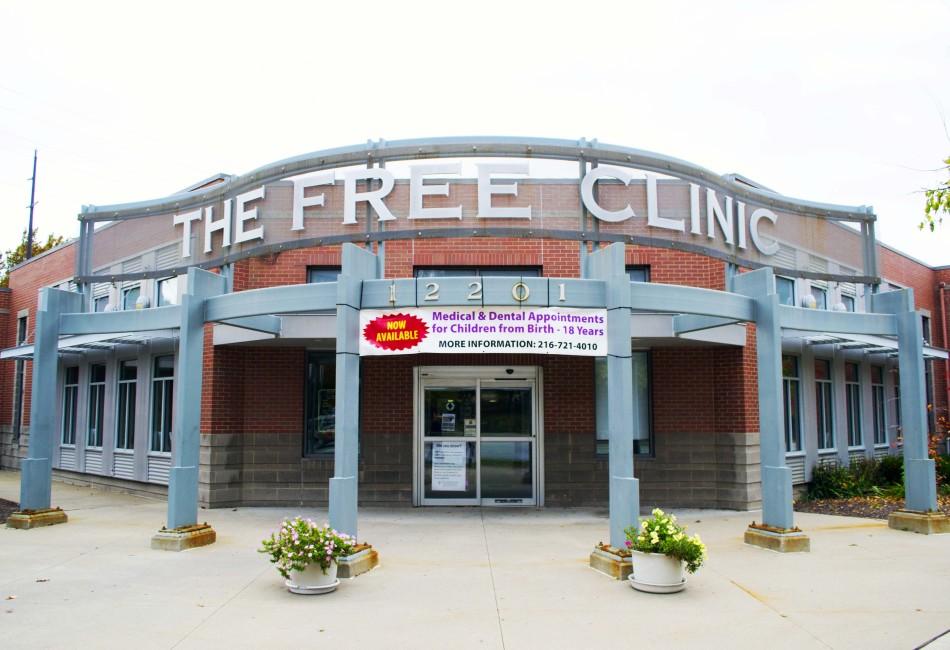Obamacare in our backyard
How the Free Clinic is adapting to the changes
The Free Clinic has had to adapt their policies following the passage of 2010’s Affordable Care Act.
When the government passed Affordable Care Act (ACA) in 2010, everyone knew it would bring change, but it wasn’t easy to say exactly how. One of its goals is to provide Americans with affordable and quality health insurance, but how is that taking shape in Cleveland? For The Free Clinic of Greater Cleveland, the ACA caused huge repercussions for patients and administrators.
Located just past the Euclid and East 120th Rapid Station, The Free Clinic has provided healthcare to greater Cleveland’s poor and underserved since the 1970s. Before the ACA, the best marker of that population was a lack of health insurance. With the act’s passage, the Free Clinic estimated that about 85 percent of its patients would be eligible for Medicaid.
That doesn’t guarantee their enrollment, however. To change that, The Free Clinic has outreach and enrollment staff that go into the community and educate people about their options, helping them to enroll in Medicaid if they need it. In this way, the Free Clinic is ensuring that more people in the community have health insurance.
Though many of its patients now have access to health insurance, The Free Clinic didn’t want to abandon them. The clinic, which was originally intended only for uninsured or underinsured people, wanted to keep its patients in order to help them avoid the disruption that occurs with a change in doctor. To do this, internal changes which allowed patients with the new insurance plan to stay at the Clinic needed to be made.
The Free Clinic’s Executive Director Danny Williams discussed how they would be adapting to the changes at the Department of Political Science’s Friday Public Affairs Lunch on Oct. 17. According to Williams, The Free Clinic has become a community health center, which allowed it to change its criteria to allow for patients with Obamacare to stay at the clinic, instead of forcing out patients it has been treating for years.
To patients, the most notable difference was the addition of a sliding fee, based on patients’ ability to pay. Though this seems counterintuitive to the mission of The Free Clinic, much of the charge falls to third party payers—in other words, the insurance companies. If individual patients don’t end up paying, The Free Clinic won’t hound them until they fulfill their debt (though it is always better if patients pay their fees).
Though not everyone realizes it, some internal alterations allowed patients to become more involved. Under the ACA, 75 percent of The Free Clinic’s executive board must be consumers of the clinic. For a couple of the board members, this meant beginning to take advantage of some of the clinic’s facilities. For some of the current patients, this meant joining the board.
Before the ACA, there was a patient advisory council giving feedback to The Free Clinic. It also served as a potential recruiting tool for new board and committee members. Patients that transferred from this council to the board helped The Free Clinic to focus both on what it needs to improve and on maintaining the quality of its services.
For example, many patients grow tired of the long wait to see a doctor. However, once they meet with a physician, it’s clear that the doctor cares about the patient and his or her health, making the visit more personal.
Improving this wait is one way The Free Clinic plans to meet one of its strategic goals—providing the highest quality clinical care and customer service. Much of the clinic’s strategic plan remained the same when it changed to a community health center—it still plans to advocate for the population it serves and provide quality care.
Williams says that some of the biggest changes are related to “quality of life” aspects of the clinic. It needs to make sure that its meeting and exceeding community standards, especially since, due to the change to a health center, there will be people periodically checking in.
“As a free clinic, there are no periodic site visits,” Williams admits. “This forces us to more regularly and more rigorously make sure we’re meeting these standards.”
“As more people get enrolled [in Medicaid], there may be greater need for more access points like us,” said Williams. He hopes that the rising ability of people to pay due to the ACA will attract more health centers to the area.

Anastazia Vanisko is copy editor for The Observer and writes for the news section. She is a third-year political science and dance double major, with minors...


